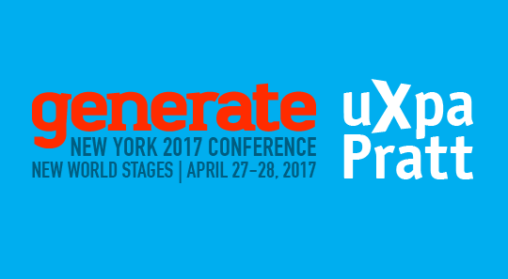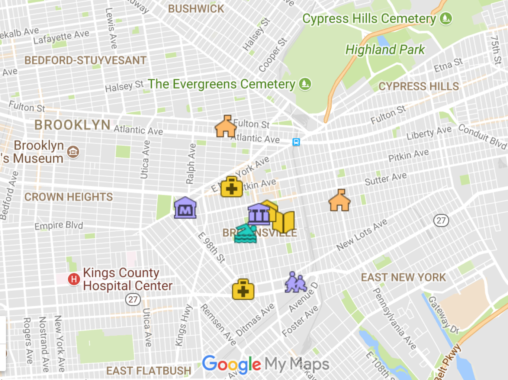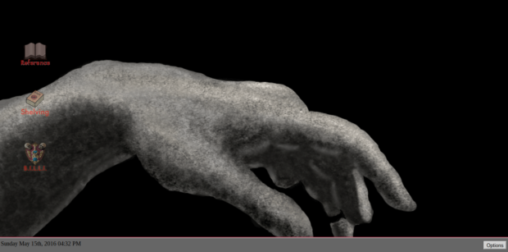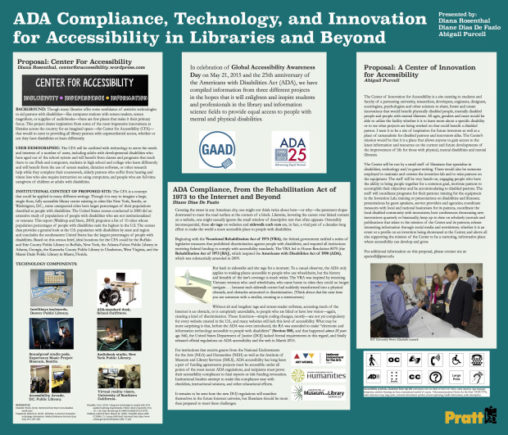Tag: technologyPage 2 of 4
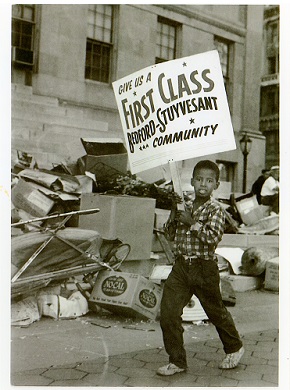
Projects in Digital Archives students present on a collaborative project with the Brooklyn Public Library to digitize audio interviews from the Civil Rights in Brooklyn Project. The interviews include interviews with notable civil rights activists from the Brooklyn chapter of the Congress of Racial Equality (CORE).
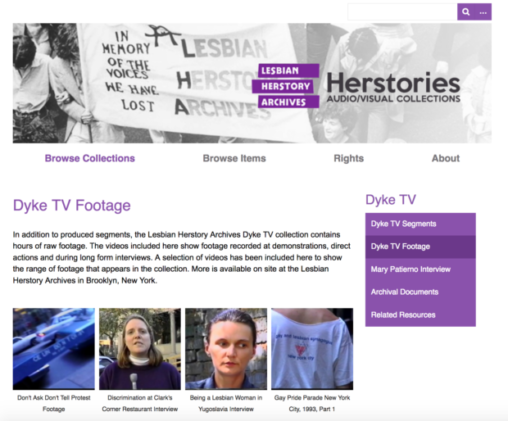
In this presentation, students from the course LIS 668 Projects in Moving Image and Sound Archives present their work in digitizing, curating and making available to the public the public-access television program DykeTV. The collection is housed at the Lesbian Herstory Archives and was reformatted from aging analog U-Matic video.
In LIS 677 Literacy and Literature for Young Adults, we used a youth lens to situate ourselves as adult librarians selecting resources for teens. Student presenters will share topical resource lists that share multiple intersections and draw on some of the newest materials for teens that address social and cultural issues using humor, advocacy, and the voices of teens.
This instructional video uses stop animation and principals of good instructional design to teach how to fold a plastic shopping bag into a neat, small triangle.
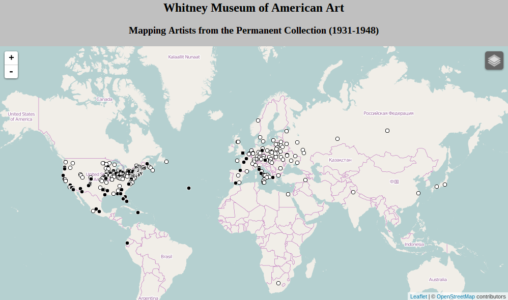
This project reports the results of the first nine months of developing linked open data with a small selection of the Whitney’s collection, focusing on the artist and works added to the collection during the founding years (1931-1948) under its first director Juliana Force. It serves as a case study for other institutions interested in developing linked open data projects. This project also demonstrates several practical examples of how linked open data can be used for research and public outreach.
Libraries around the world have been concerned with the digitization of theirmaterials for the past two decades. A digitally available global library is growing, thanks to immense projects like Google Books, and large academic libraries that have been ceaselessly digitizing their materials as new scanning and data storage technologies continue to revolutionize the field. This presents a question of a huge amount of labor—who will do it?
First, I want this paper to shine a light on the actual labor performed by book
scanners for Google, and for other, smaller, library digitization projects. Manual labor continues to drive technological advancement, whether it’s in Apple’s Chinese factories where women construct iPhones for menial pay, or in Silicon Valley where Google’s scanning team works overnight to digitize the world’s libraries.
Second, I want to reveal the ways in which this labor goes undiscussed, both as
(likely) company policy at Google, and in smaller libraries, public and private, around world. Why does this labor remain hidden? The underground sensation that surrounds the Google’s scanning labor, and the way that the transformative labor of digitization goes unremarked, gets us close to the very old class conflict that is at the center of the new tech economy.
The first section of this paper will look at artist Andrew Norman Wilson’s
findings in his art pieces dealing with Google’s book scanning operations, and what we can know about labor conditions there. I then want to connect those findings to labor in smaller digitization undertakings at academic, public, and private libraries around the country. This leads to a discussion of automated robotic book scanners, and the future of library material digitization in the burgeoning convenience economy.
“‘Data-Drive Transparency’: Creation and Consequence of the Data-Public” analyzes the impact open government data programs have on society. The paper discusses how open government data, despite being marketed as democratic transparency initiative, results in the formation of a ‘data-public’ and the ascendance of neoliberal politics.
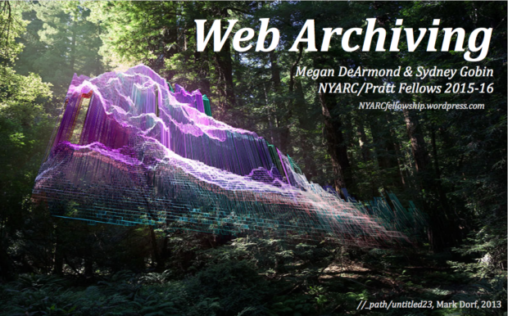
For the past two semesters, we have been working as NYARC interns located at the Frick doing web archiving of various types of sites (galleries, museums, catalogue raisonnes). We would like to share about the processing of web archiving using Archive-It as well as other new technologies such as Rhizome’s web recorder.
Our project, Artists’ Books Holdings, is an attempt to analyze and visualize data about artists’ books holdings on an international scale. This project is a work in progress created in LIS 644- Programming for cultural heritage. It illustrates our ability to work with data in a programmatic manner and create visualizations that represent data in a more human readable manner.
This study aims to shed light on conversations of surveillance over the past 40 years of American discourse, using a corpus of Congressional records, mainstream and independent news sources, movie scrips and reviews, and archival materials. By comparing general and specific sentiment measurement across these various sources, we examine points of similarity and difference in attitude across the present and past, cultural and countercultural, institutional and popular with regard to surveillance—watching surveillance, as it were, through assemblages of text and data.
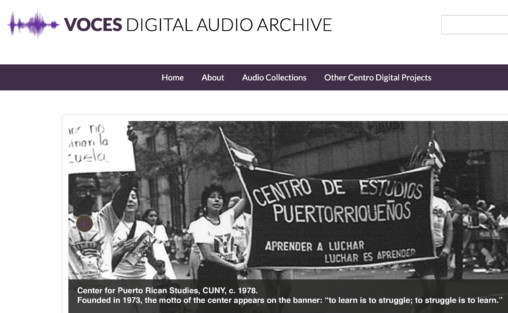
Coral will introduce the Voces Digital Audio Archive, an online archive created by students in LIS 665 that documents the Puerto Rican diaspora. Includes a discussion of digitization, curation, metadata and experience design of this collaborative project with the Archives of the Center for Puerto Rican Studies (CUNY).
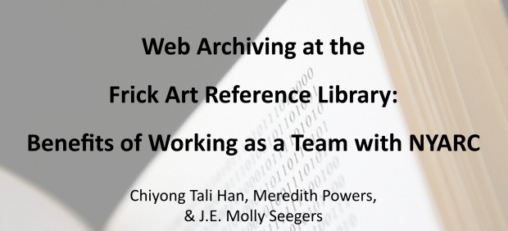
NYARC implemented a web archiving program to preserve born-digital art resources and develop a sustainable model for archiving dynamic, image-based web content. As IMLS grant-funded interns for web archiving, we spent two semesters at the Frick Art Reference Library working on various facets for capturing online art resources.
This paper covers how different folksonomy based systems can be integrated into the public library to move towards Library 2.0. These programs can help show how the library is involved in the community. I also discuss how folkonomy can help patrons discover new books through discovery.

